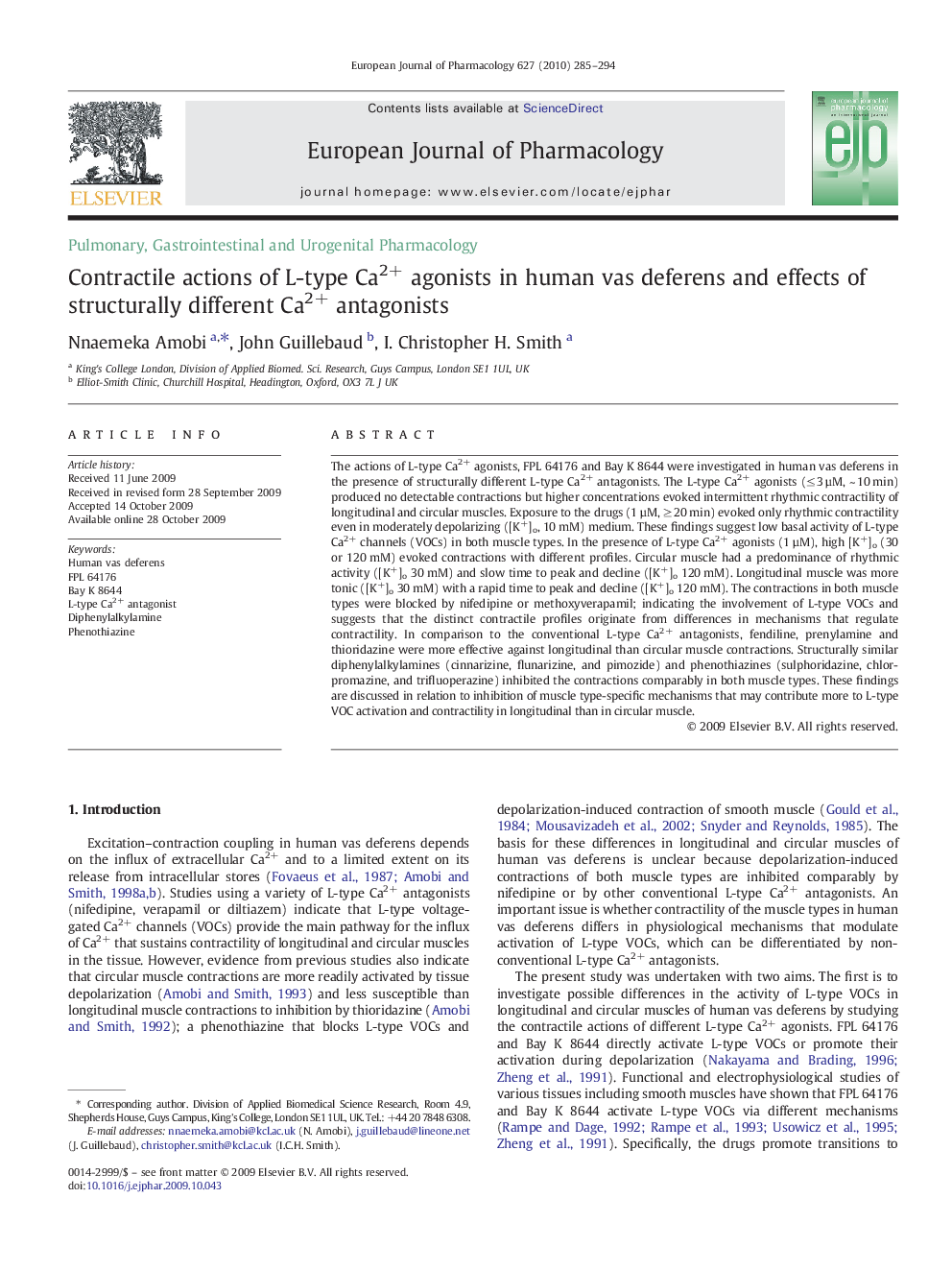| Article ID | Journal | Published Year | Pages | File Type |
|---|---|---|---|---|
| 2533780 | European Journal of Pharmacology | 2010 | 10 Pages |
The actions of L-type Ca2+ agonists, FPL 64176 and Bay K 8644 were investigated in human vas deferens in the presence of structurally different L-type Ca2+ antagonists. The L-type Ca2+ agonists (≤ 3 µM, ~ 10 min) produced no detectable contractions but higher concentrations evoked intermittent rhythmic contractility of longitudinal and circular muscles. Exposure to the drugs (1 µM, ≥ 20 min) evoked only rhythmic contractility even in moderately depolarizing ([K+]o, 10 mM) medium. These findings suggest low basal activity of L-type Ca2+ channels (VOCs) in both muscle types. In the presence of L-type Ca2+ agonists (1 µM), high [K+]o (30 or 120 mM) evoked contractions with different profiles. Circular muscle had a predominance of rhythmic activity ([K+]o 30 mM) and slow time to peak and decline ([K+]o 120 mM). Longitudinal muscle was more tonic ([K+]o 30 mM) with a rapid time to peak and decline ([K+]o 120 mM). The contractions in both muscle types were blocked by nifedipine or methoxyverapamil; indicating the involvement of L-type VOCs and suggests that the distinct contractile profiles originate from differences in mechanisms that regulate contractility. In comparison to the conventional L-type Ca2+ antagonists, fendiline, prenylamine and thioridazine were more effective against longitudinal than circular muscle contractions. Structurally similar diphenylalkylamines (cinnarizine, flunarizine, and pimozide) and phenothiazines (sulphoridazine, chlorpromazine, and trifluoperazine) inhibited the contractions comparably in both muscle types. These findings are discussed in relation to inhibition of muscle type-specific mechanisms that may contribute more to L-type VOC activation and contractility in longitudinal than in circular muscle.
